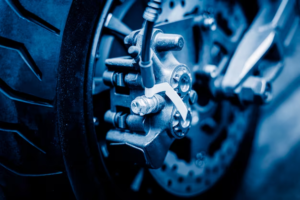You can check your car’s wheel bearings to see if they need to be repacked. Wheel bearings usually come in pairs, including an inner bearing and an outer bearing. They keep your wheels turning freely over thousands of miles with frictionless bearings and plenty of sticky grease to cushion the contact between the wheel and the spindle. This grease tends to attract dust, dirt, and small metal particles, even if the bearings are protected to some extent by the wheel hub and brake drum or brake disc. NSAR provides quality wheel bearings and automotive accessories, click to learn detailed product manuals.
Usually, only non-driven wheels have replaceable wheel bearings. Front bearings on front-wheel drive vehicles are sealed, but some vehicles have replaceable rear bearings.
Tips:Before checking the bearings, check your owner’s manual or ask your dealer to see if the bearings on your vehicle are sealed. If they are, you can’t repack them.
If you just want to check the wear of your wheel bearings without removing the wheels, do the following:
Jack up your vehicle with a jack.
Support it with jack stands.
Without getting under the vehicle, grab the top and bottom of each wheel and try to shake it.
The movement should be as minimal as possible. Excessive movement may indicate a worn wheel bearing that needs adjustment or replacement.
Put the shifter in neutral if you have an automatic transmission, or in neutral for a manual transmission.
Spin the wheel.
Listen for any unusual noises and feel for any roughness when spinning, which may indicate the bearing is damaged and needs replacement.

Your vehicle will signal that you need to replace a faulty wheel bearing. For example, if you hear unusual sounds like humming or clicking, the bearing may be damaged. Watch for and listen for the following signs and symptoms:
1. Buzzing
The easiest and most common symptom of a bad wheel bearing is the sound. But this can be confusing. For example, the source of the humming may be related to other issues, such as tires and CV joints.
2. Screeching, Growl
The typical sound of a worn wheel bearing is a squealing and/or growling sound. The sound gets louder as the vehicle speed increases. Try to locate the location of the noise, as it will identify the location of the worn bearing.
3. Clicking Sounds
If you hear a clicking sound that increases in frequency as the vehicle accelerates, there may be a problem with the hub assembly.
4. Wheel Wobble
A technician can check for wheel wobble by placing the vehicle on a lift and manually checking to see if the wheel moves. Normally, it is not possible for the wheel and tire to wobble. However, if the wheel and tire move, the hub assembly needs to be checked immediately. If the vehicle is not repaired, the tire and wheel may come off the vehicle at any time and at any speed.
5. ABS Failure
If the ring, tire, and wheel wobble, the wheel speed sensor is no longer functioning properly, and the ABS may work sporadically or not at all. The anti-lock warning light may illuminate. Have it repaired by a professional.
6. Uneven Tire Wear
If one tire wears faster than the others, it may be a sign of worn wheel bearings. However, it may also be a sign of improper tire inflation (too much or too little air pressure), improper tire alignment, or damaged or worn suspension components on the vehicle.
7. The vehicle pulls to one side
A worn bearing may cause the vehicle to pull to the left or right when braking. The direction the vehicle pulls indicates that the worn bearing is on the left or right side of the vehicle. However, it may also indicate a problem with the brake rotor or brake caliper.
8. Steering wheel vibration
A damaged wheel bearing can cause the steering wheel to vibrate. The intensity of the vibration increases as the vehicle speed increases and the vehicle turns left or right. However, the vibration may be related to the tire being out of round (there may be a flat spot on the tire) or the tire no longer being balanced. Another cause is damaged or worn suspension components.
9. The steering feels loose
If there is excessive steering play, that is, the steering seems unresponsive or less precise than normal, a worn bearing may be the cause of the problem. In addition, this may be a sign that the vehicle needs a wheel alignment.
NSAR has a mature bearing production line that can produce a variety of customized products such as ball bearings, roller bearings, etc. Come and grab the spot.
Copyright © NSAR Bearings. All rights reserved. Privacy Policy